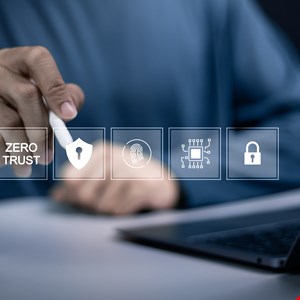
Implementing Zero Trust involves several key principles. First and foremost is the adoption of an identity-centric approach. Instead of focusing solely on securing the network perimeter, Zero Trust emphasizes securing individual identities and devices. This is crucial in today's dynamic workforce landscape, where employees may access company resources from various devices and locations.
Automation and orchestration play a vital role in the effective implementation of Zero Trust. The National Security Agency (NSA) has underscored the importance of automating security processes and orchestrating responses to potential threats swiftly. This not only enhances the efficiency of security operations but also ensures consistent enforcement of access policies across the organization.
Culturally, Zero Trust requires a fundamental shift in how organizations perceive and manage security. It necessitates a proactive rather than reactive approach to cybersecurity, encouraging continuous monitoring, assessment, and adaptation to emerging threats. Moreover, it promotes a culture of accountability and shared responsibility among employees, where everyone understands their role in safeguarding sensitive data and systems.
The COVID-19 pandemic has further accelerated the adoption of Zero Trust principles. With the rapid shift to remote work, traditional security perimeters have dissolved, making Zero Trust an imperative for ensuring data protection and regulatory compliance in a distributed environment.
Despite its clear benefits, implementing Zero Trust can be challenging. It requires robust planning, investment in technology, and organizational commitment. Moreover, achieving Zero Trust is not a one-time project but an ongoing journey that evolves alongside technological advancements and emerging threats.
So, Zero Trust represents a paradigm shift in cybersecurity, moving away from the traditional castle-and-moat approach to a more dynamic and resilient security posture. By embracing Zero Trust, organizations can better protect their sensitive data, mitigate risks, and adapt to the evolving threat landscape. As we continue to navigate the complexities of cyberspace, Zero Trust offers a forward-thinking strategy to safeguard digital assets and maintain trust in an interconnected world.


0 Comments